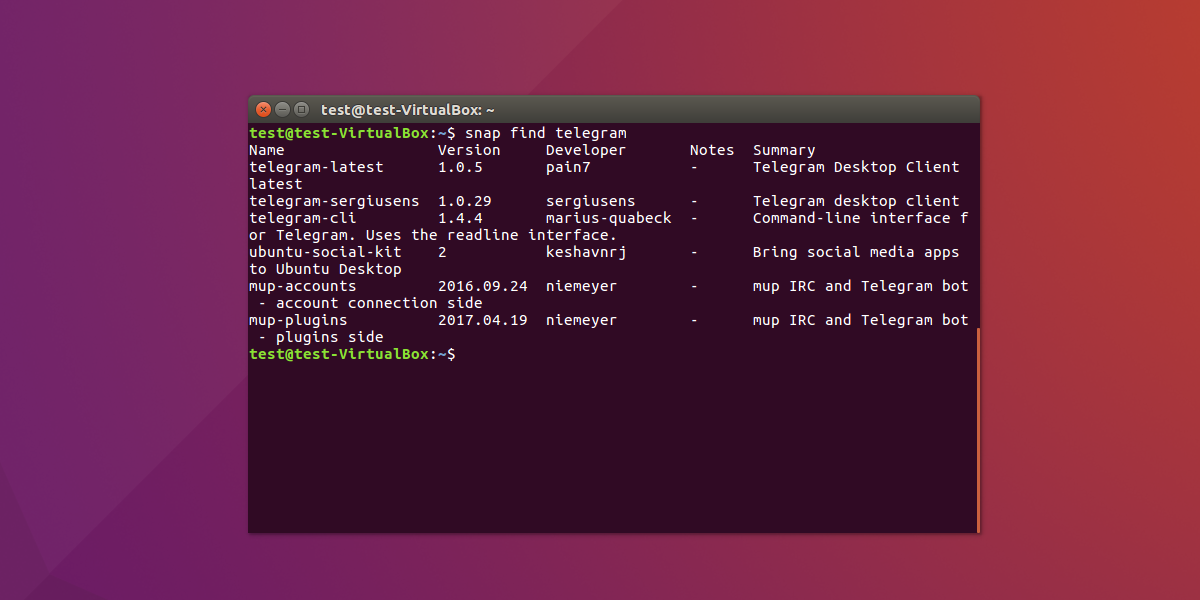On Linux, there are a lot of alternative ways to put in software program. There are Debian packages, Redhat RPM packages, the Arch Linux consumer repository, the Gentoo Portage tree, AppImages, tar.gz archives with static binary information, and the checklist goes on. Nonetheless, with as some ways to put in software program on Linux, there are nonetheless many issues current. For instance: when growing skilled software program for Linux, it’s very onerous to get it on each single Linux distribution. The individuals at Ubuntu are dedicated to fixing this difficulty. Their resolution ; Snap packages. Right here’s a have a look at the necessity for Snap Packages on Linux, and easy methods to use and set up them.
SPOILER ALERT: Scroll down and watch the video tutorial on the finish of this text.
Why Snap Packages Have been Developed
Typically instances builders discover themselves packaging their packages in many alternative bundle sorts, and get discouraged. It takes time to make all of those bundle information, and in consequence, plenty of packages don’t make it onto Linux. For this reason the individuals at Ubuntu developed Snap packages. A snap is one thing that may be put in from the snap retailer, and contained in the “snap” is every thing this system is required to run.
Which means every thing the app wants (libraries, binary information, picture information, audio information and packages) are self contained and might run impartial of the system. This ensures that it doesn’t matter what, this system will run regardless of how outdated, or misconfigured the host system is. This Successfully makes it attainable to put in snaps on any Linux distribution, and makes it a “universal installer” that any developer, massive or small, can choose up and even make their very own snap retailer!
Putting in Snapd and getting it operating
Snapd is the know-how that helps snaps run on Linux. The corporate behind snaps has labored with different Linux distribution makers in order that the favored and most used Linuxes can run and set up snaps with ease. Right here’s easy methods to get it operating
Observe: Ubuntu customers, in addition to these utilizing a Linux distribution based mostly on Ubuntu is not going to want to put in Snapd.
Debian testing/unstable
sudo apt set up snapd
Fedora
sudo dnf set up snapd sudo systemctl allow --now snapd.socket
Arch Linux
sudo pacman -S snapd sudo systemctl allow --now snapd.socket
OpenSUSE Leap 42.2
sudo zypper addrepo snappy sudo zypper set up snapd sudo systemctl allow --now snapd.socket
OpenSUSE Tumbleweed
sudo zypper addrepo snappy sudo zypper set up snapd sudo systemctl allow --now snapd.socket
Gentoo
sudo -s
nano -w /and so forth/portage/repos.conf/gentoo-snappy.conf
Paste the next:
[gentoo-snappy] # An unofficial overlay that helps the set up of the "Snappy" spine. # Maintainer: Clayton "kefnab" Dobbs (clayton.dobbs@gosecur.us) # Upstream Maintainer: Zygmunt "zyga" Krynicki (me@zygoon.pl) location = /usr/native/portage/gentoo-snappy sync-type = git sync-uri = precedence = 50 auto-sync = sure
Save the configuration file with ctrl + O.
emaint sync --repo gentoo-snappy
How To Use Snaps
As talked about earlier, snaps are hosted within the “snap store” run by Ubuntu and Canonical respectively. Anybody can submit a snap free of charge. For these seeking to publish their very own snap packages to the shop, head over to Snapcraft.io. This web site has the entire data (in heavy element) that may get you began.
To search the shop for software program, strive utilizing the discover command:
snap discover programname
For instance:

snap discover telegram
This prints an inventory of all installable snap packages with the key phrase “telegram” in it. Look by way of this checklist, and work out what bundle to put in. Then, use the set up command to make it occur.
sudo snap set up telegram-latest
This can obtain the most recent model of the snap from the shop, and set up it to the system, after which mount the snap container in order that the consumer can entry the software program within it. To view the place the snap is mounted, run the lsblk command. It is because the software program is a mounted quantity and no totally different for the system from some other mounted onerous drive, or machine.
Take away any put in snap bundle from the system with the take away command.
For instance:
sudo snap take away telegram-latest
Overlook the identify of a snap you want to take away? Do this:
snap checklist
The checklist command will print out an inventory of all put in snaps. From right here, be aware of the identify of the snap, then take away it from the system with the take away command above.
Observe: Discover different instructions not mentioned on this tutorial through the use of snap --help
Updating Snaps
Like every software program, snaps should replace. The snap daemon manages each snap container on the system. Because of this, snap packages is not going to replace with standard means. To replace put in snap packages on the system, use the refresh command. The final essential command for utilizing snaps is the refresh command.
sudo snap refresh
Conclusion
Snap packages have the potential to exchange methods we set up and use software program on Linux, by making it simpler to distribute. As an alternative of software program builders having to create a number of totally different packages, binaries and supply strategies to perform the identical job, they’ll simply create a single snap container. Self contained with libraries, executable code, and different necessary information that customers can simply set up with a single command.
Snaps aren’t excellent. Some new Linux customers will have points utilizing them. It is because putting in apps will solely work with the command line. We will solely hope that as snap packages get an increasing number of common, the individuals at Ubuntu will work on a pleasant consumer interface to put in and use snaps. Until then, the command line should do.
